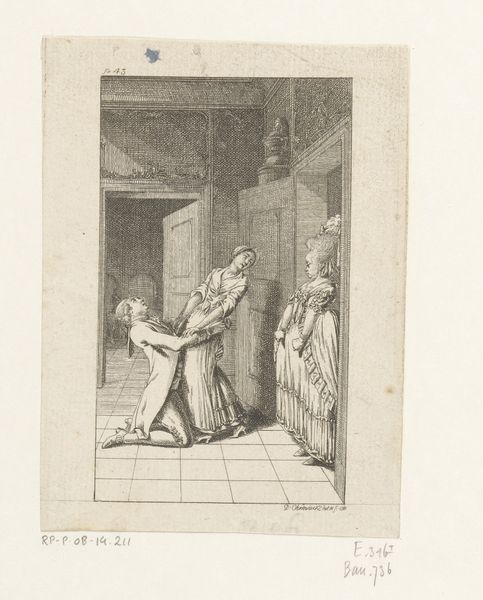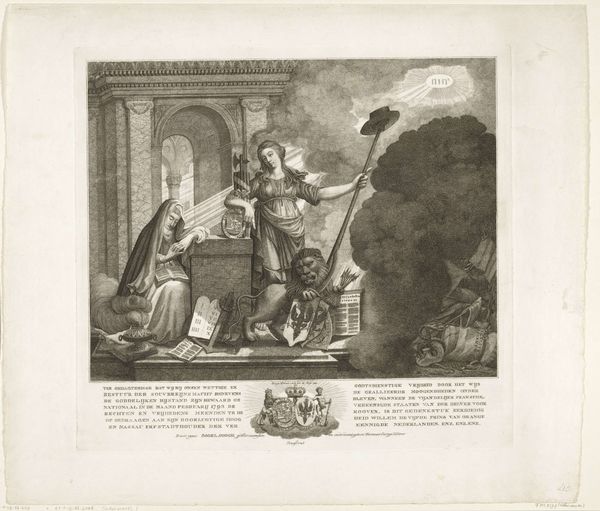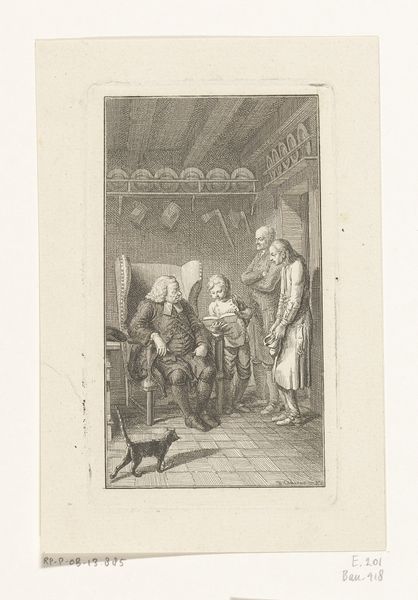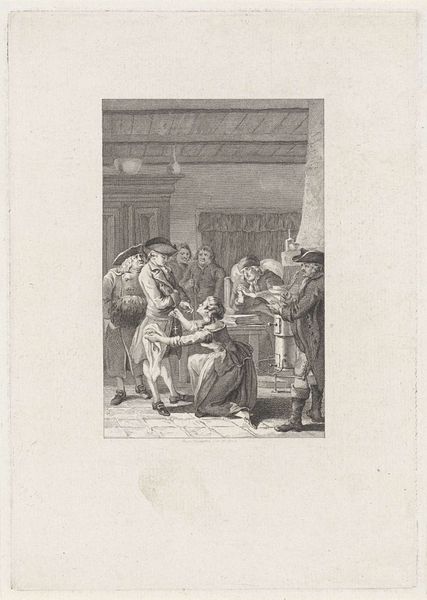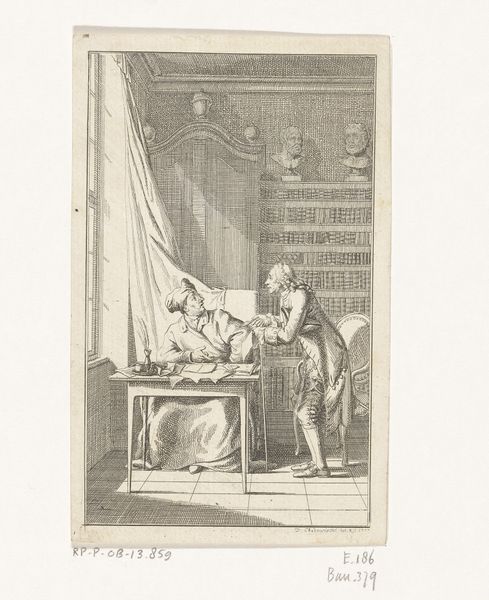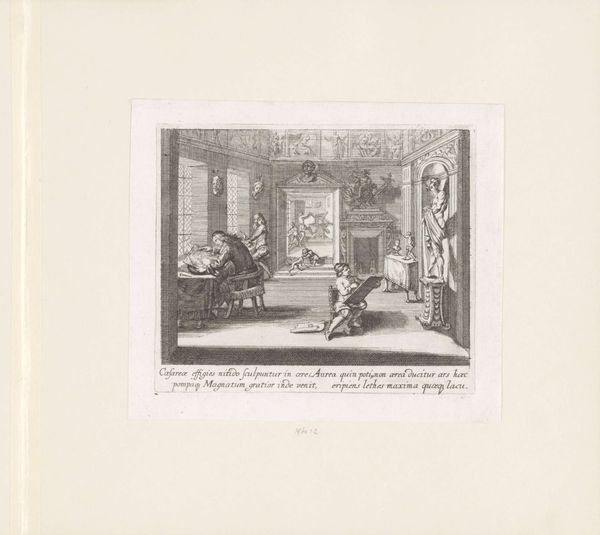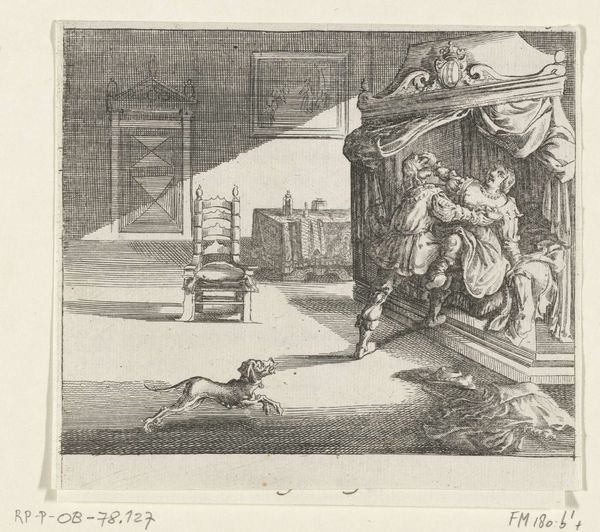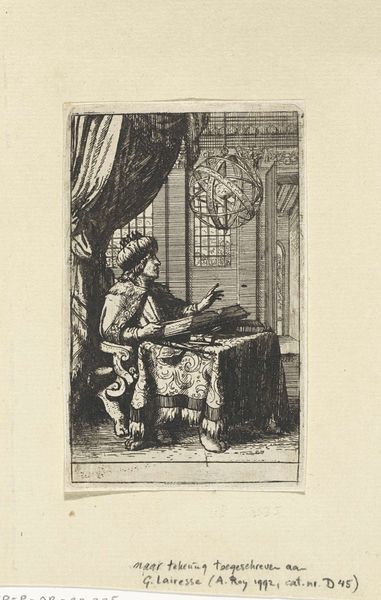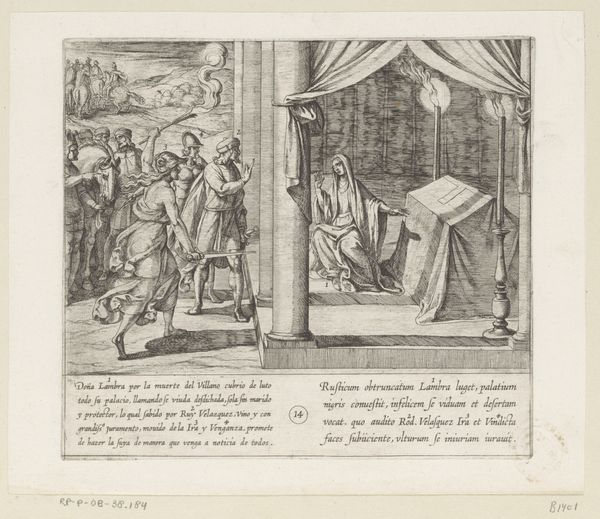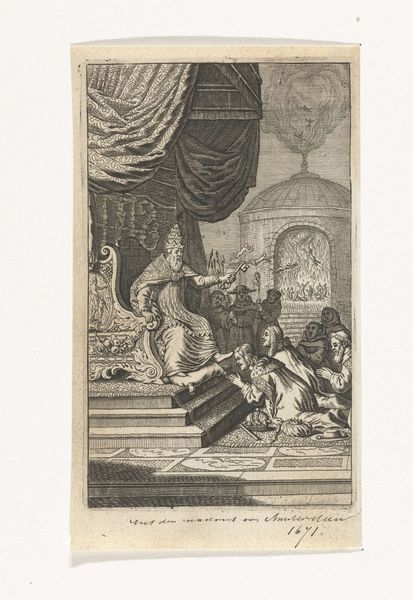
print, engraving
#
portrait
#
narrative-art
# print
#
asian-art
#
old engraving style
#
figuration
#
classicism
#
line
#
history-painting
#
engraving
Dimensions: height 223 mm, width 264 mm
Copyright: Rijks Museum: Open Domain
Editor: This is an engraving from 1781 titled "Quantekong as eerste keizer van China," attributed to W. Tringham. It's quite detailed, depicting a figure in what looks like a palace setting. I’m struck by the amount of text included as part of the backdrop and I'm wondering what to make of it. What do you see in this print? Curator: From a materialist perspective, the print’s creation using engraving is significant. Engraving, as a reproducible medium, democratizes the image, making it accessible to a broader audience than a unique painting would. We have to consider who the intended audience was, who produced this image, and why. Note the lines themselves – laboriously carved into a metal plate. What implications do you think that has? Editor: I suppose that making prints allowed for widespread distribution of information and possibly propaganda. Curator: Exactly! Think about the labor involved – the engraver’s skill, the workshop’s economics, and the print’s dissemination. How does the artist represent 'China'? Look at the lines used to depict the clothing and the setting, compare these with contemporaneous engravings made in China. Where do you see evidence of cultural translation occurring? Editor: I notice how different the written script appears, almost like a pattern rather than something meant to be read. It makes me consider how someone unfamiliar with the context would approach this work. Curator: Precisely. This distance—both geographic and cultural—informs our reading. What we learn from it goes beyond aesthetics. It underscores questions around the power dynamics inherent in representation. The very act of creating and circulating this image is tied to broader narratives of trade, colonialism, and the consumption of the "exotic" in the late 18th century. Editor: That really changes how I view the image. Thanks for pointing out these elements; it’s more than just a historical portrait. Curator: Indeed. By considering the materials, production, and historical context, we can unpack its complex social and political implications.
Comments
No comments
Be the first to comment and join the conversation on the ultimate creative platform.
